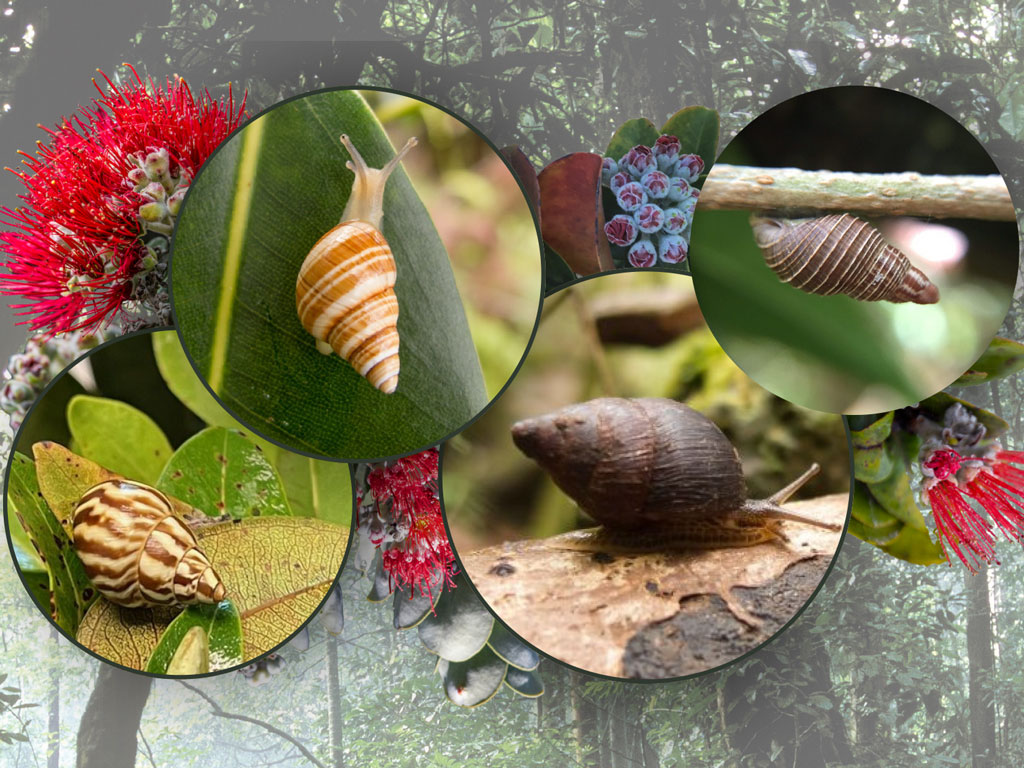by Hailey Zalopany
When the native Hawaiian snail Amastra intermedia was first discovered in the wild, only 10 individuals were known to exist. Today, thanks to dedicated conservation efforts, this tiny species is making a remarkable comeback. Over the past decade, more than a hundred snails have been released.
Interestingly, Amastra intermedia was once grouped under Amastra cylindrica, until recent genetic research revealed that what was thought to be one species is actually three distinct ones. Because these snails look so similar, the difference wasn’t recognized until testing clarified their identities. The population being raised at the Honolulu Zoo is now correctly identified as Amastra intermedia.
From Abundance to Endangerment
Hawai‘i is often called the extinction capital of the world, and native snails are among its most vulnerable species. Once abundant, many Hawaiian snail populations began to decline when rats were introduced to the islands via early Polynesian canoes. Later, during the plantation era, the practice of collecting shells for lei-making further decimated their numbers. Today, these unique creatures face a new wave of threats, including invasive predators such as the rosy wolf snail and chameleons, as well as continued rat predation. With no natural defenses against these introduced species, Hawai‘i’s endemic snails have been pushed to the brink, making conservation efforts more urgent than ever.
A Small Species With a Big Role
Native to Hawai‘i and found nowhere else on Earth, Amastra intermedia is a ground-dwelling snail that plays an important role in the ecosystem. As lead zookeeper on this program, Rebecca Choquette calls them “the unsung heroes of the forest”. These “forest janitors” break down fallen leaves and plant material, helping to recycle nutrients back into the soil. But their survival has been threatened by habitat loss and invasive predators, pushing them (and hundreds of other snail species) to the brink of extinction.
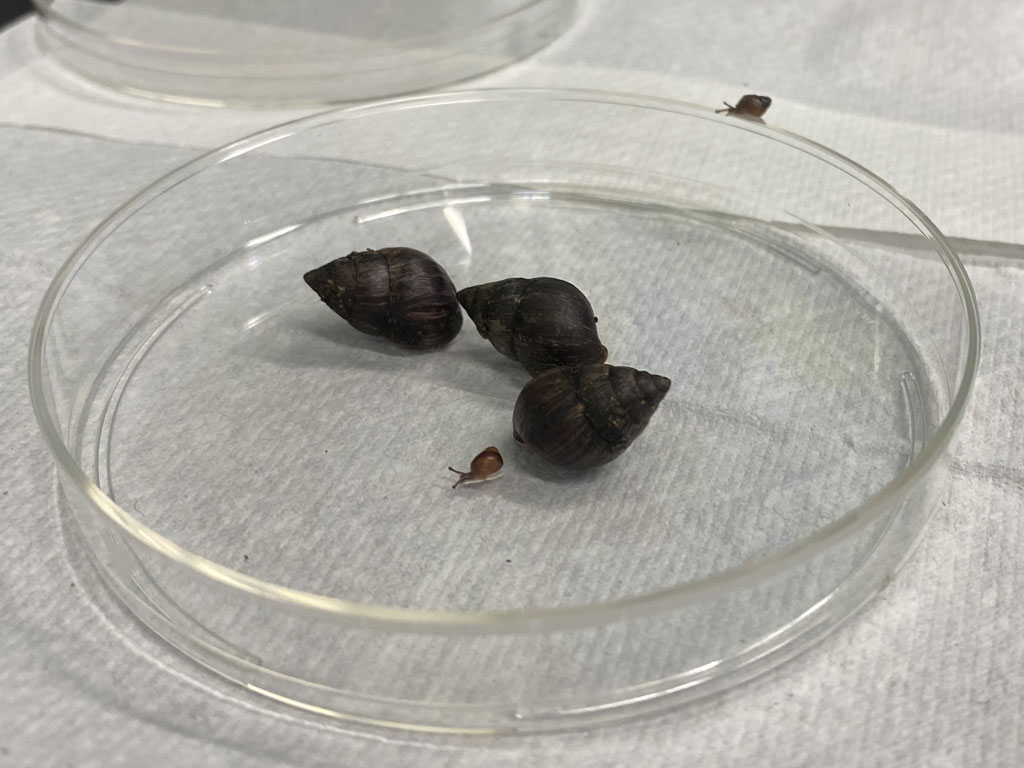
Breeding Success at the Honolulu Zoo
The Honolulu Zoo began working with just 10 Amastra intermedia. In 2024, their program released 137 snails, and this year, they expect to release more than 200. Every two weeks, keepers find between 5 and 9 tiny new hatchlings in the breeding enclosures. The breeding tanks that the snails are kept in are frequently monitored. Unlike many other snail species, Amasta intermedia gives birth to live young rather than eggs, meaning that caretakers need to pay extra close attention to spot the little ones. Once the snails reach about 8 millimeters in size, they are ready to return to the wild.
Rosy Wolfsnail
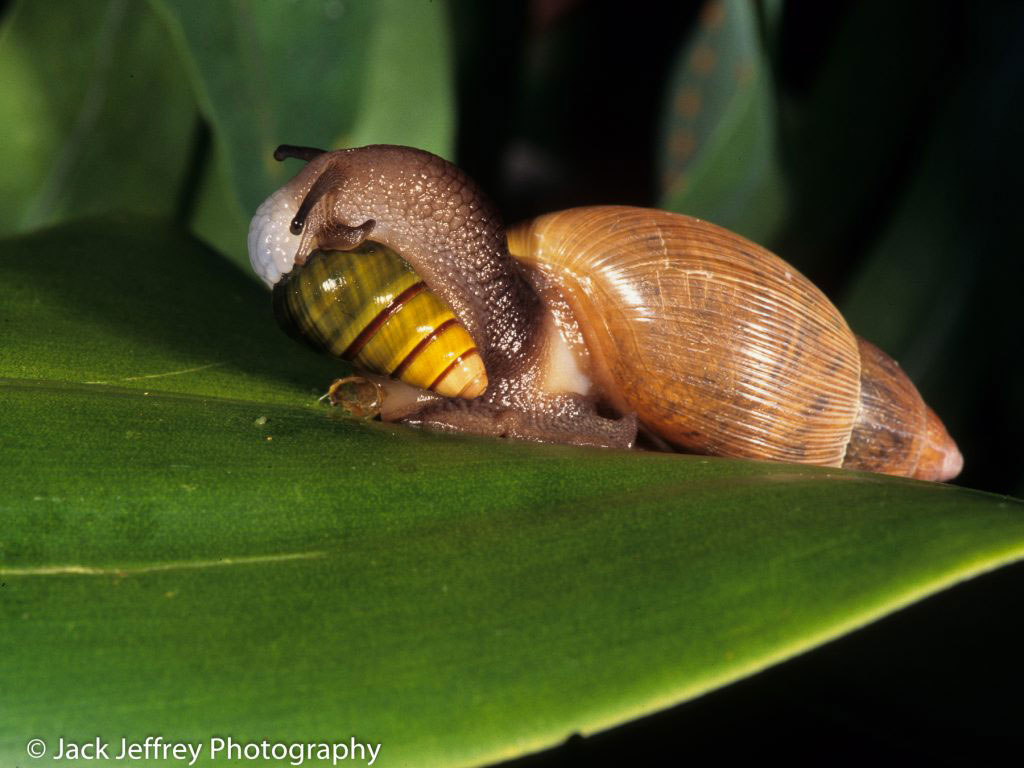
In the 1950s, the cannibal snail, Euglandina rosea, was introduced in an attempt to control the invasive giant African snail. Instead, it has become one of the most destructive predators of native Hawaiian snails. Feeding exclusively on other mollusks, this relentless species has spread across the islands, reaching even the most remote and highest forest reserves.
Keeping Snails Safe: Exclosures and Predator Control
Releasing the snails is not as simple as setting them free. The zoo partners with the Hawai‘i Department of Land and Natural Resources (DLNR) to place them into snail exclosures — specially built, predator-proof areas in secret mountain locations. Unlike an enclosure meant to keep animals in, these exclosures were built to keep unwanted animals out. These secure sites keep out invasive threats such as the rosy wolf snail (a carnivorous snail introduced for pest control), rats, and Jackson’s chameleons. The exclosures mimic the snails’ natural habitat, full of native Hawaiian plants, while giving them the best possible chance of survival.

Follow The Kahuli!
Opening this September, the Honolulu Zoo will introduce a new area of the zoo, the Kāhuli Hale. Find the Hale by following the Kāhuli posted around the zoo and the snail trail it leaves behind. In the Hale, learn about Hawaii’s native snails and the ongoing efforts to ensure their survival.
A New Wing for Conservation
To meet the growing needs of their program, the Honolulu Zoo is adding a new climate-controlled “wing” to the back of their barn area. This specialized space will allow the zoo to increase its capacity for Amastra intermedia and expand to other species, including native tree snails. Equipped with environmental controls and dedicated work areas, the new wing will give keepers the tools they need to continue growing populations and protecting more of Hawai‘i’s rare snails.
For parents, keiki, and fellow snail lovers, an interactive area will be added to the breeding lab. The interactive hub will be called “Hale Kāhuli” (snail house). Viewers can find the Hale Kāhuli by following a “slime trail” and snail posters pointing the way.
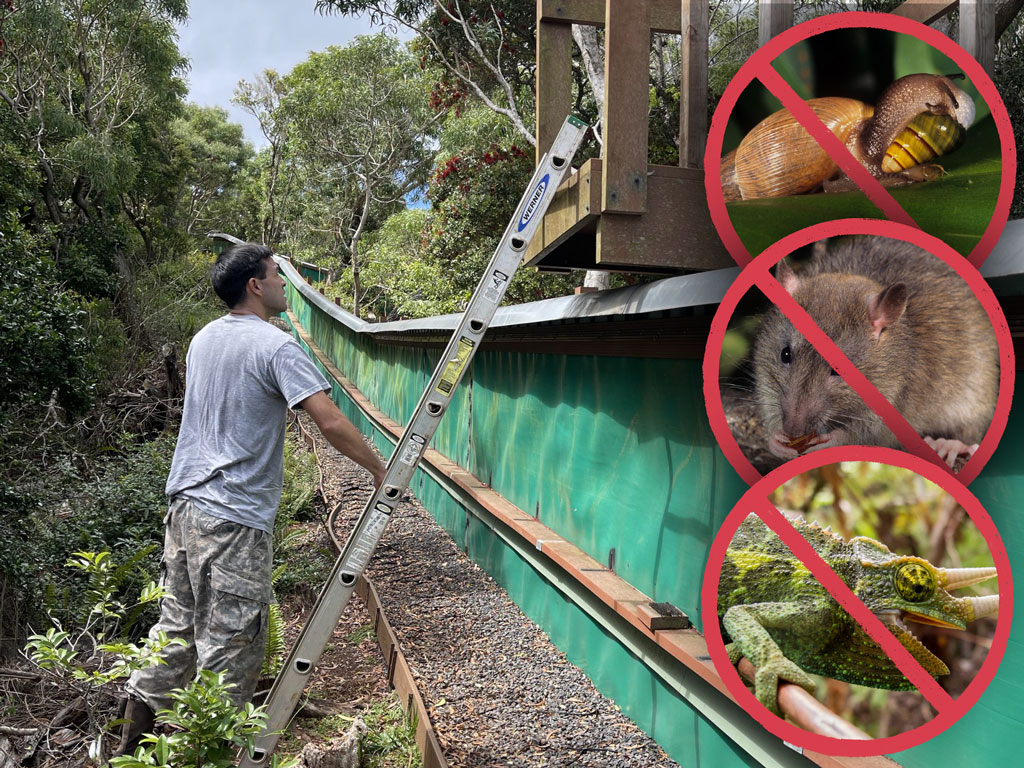
Looking Ahead
The Honolulu Zoo’s long-term goal is to not only rebuild healthy populations of wild Amastra intermedia, but also to expand their conservation efforts to include other imperiled snail species across the islands. This vision involves a careful balance of science, stewardship, and community engagement. Through captive breeding programs, the zoo is able to raise snails in a protected environment until they are strong enough to survive in the wild. These snails are then released into specially designed, predator-proof enclosures—safe havens that shield them from invasive threats like rats, chameleons, and the cannibal snail. Alongside these hands-on efforts, the zoo and the Department of Land and Natural Resources (DLNR) are working to raise public awareness about the importance of Hawai‘i’s native snails and the unique role they play in local ecosystems. By uniting advanced conservation techniques with education and outreach, they are giving these fragile species not just a fighting chance, but a path toward a sustainable future.
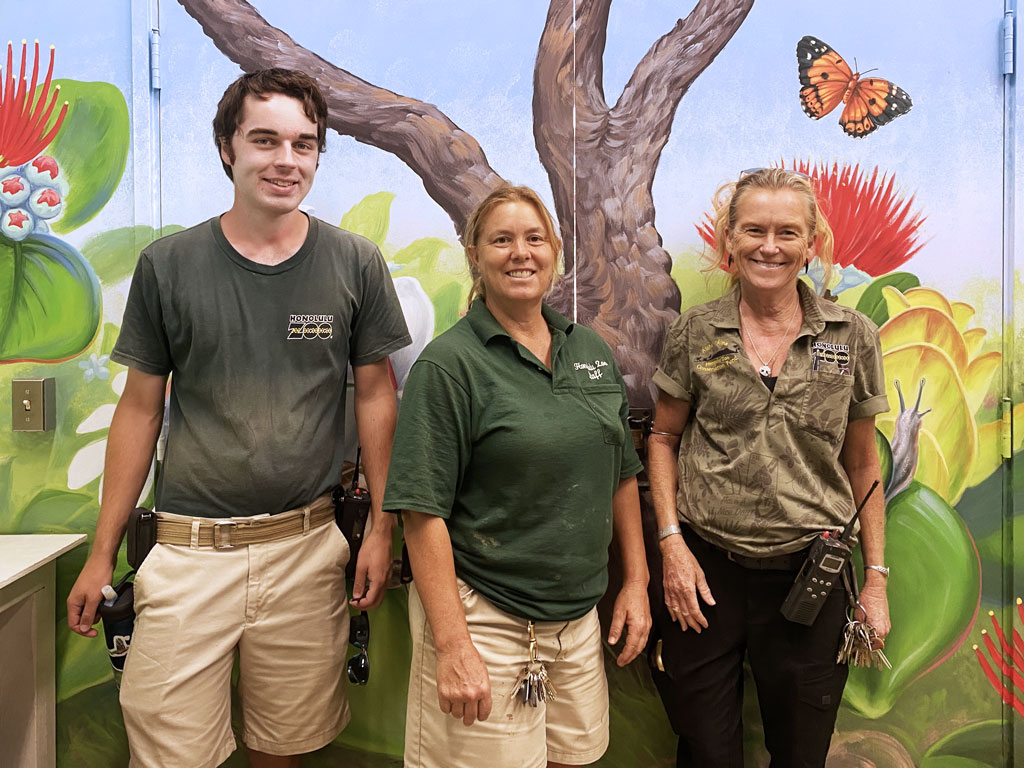
How Families Can Help
While the release sites remain a secret to protect the snails, families can visit the Honolulu Zoo to learn more about the program and why even the smallest creatures matter. Zoo keeper Choquette says, “Even the tiniest animals have a role to play in the circle of life, and they deserve to be protected and cared for.”
While learning about native Hawaiian snails is a vital first step, there are many other ways to support their survival. Planting and maintaining native gardens, preventing the spread of invasive species, and joining local conservation programs all play an important role in protecting these rare and fragile creatures.
From just 10 known survivors to hundreds now thriving under human care, the remarkable journey of Amastra intermedia is a testament to what can be achieved through dedication, patience, and community collaboration. Once teetering on the brink of extinction, this small but significant native Hawaiian snail has been given a second chance thanks to the tireless efforts of conservationists, researchers, and volunteers. Their work—raising snails in captivity, protecting them from invasive predators, and carefully reintroducing them into safe habitats—shows that even the tiniest species can inspire hope and make a powerful comeback when people come together with a shared purpose.
Images provided by the Department of Land and Natural Resources’ Snail Extinction Prevention Program (SEPP). Special thanks to the Honolulu Zoo for partnering with us to share this story.


